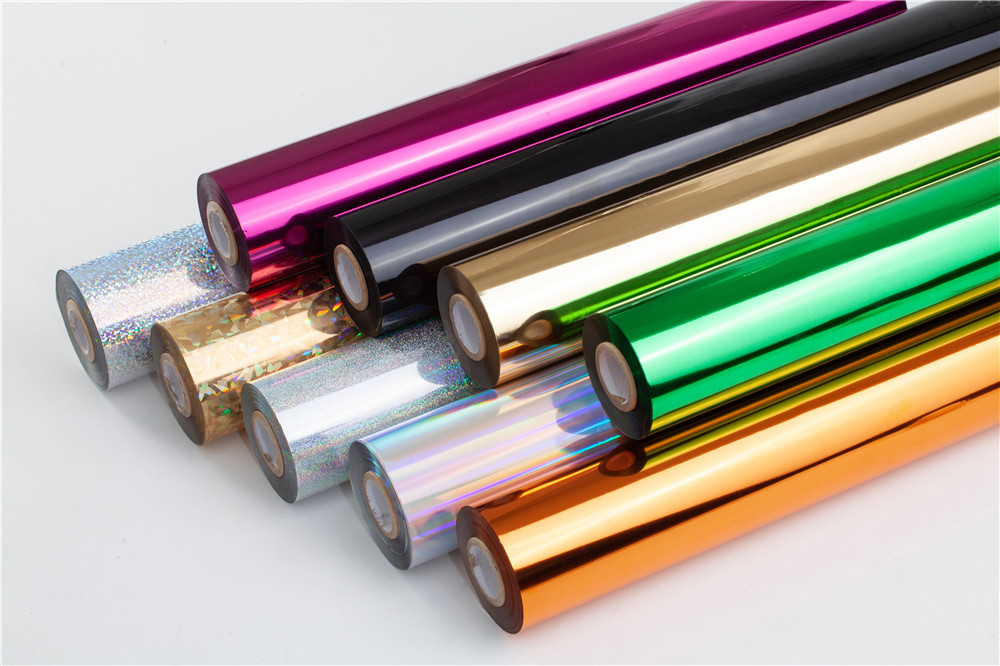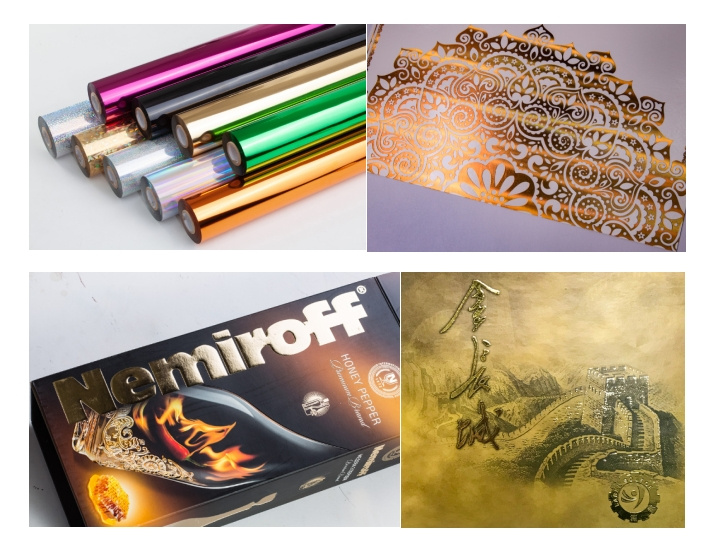Comprehensive Guide to Screen Printing Foil Substrate Selection
Selecting the appropriate substrate is crucial when using silk screen printing foils to ensure optimal adhesion, durability, and visual impact. As a leading manufacturer of silk screen printing foils, Dragon Foils understands the importance of choosing the right substrate to achieve the desired results. Here we will explore the factors to consider when selecting a substrate for silk screen printing foils and provide valuable insights to help you make informed decisions.
Before delving into substrate selection, it's essential to understand the characteristics of silk screen printing foils. These foils consist of a thin layer of metallic or pigmented material that is transferred onto the substrate using heat and pressure. The foil adheres to the substrate's surface, creating a visually stunning effect that enhances the appearance of packaging, artwork, and promotional materials.

Surface Texture: The surface texture of the substrate plays a significant role in the adhesion of silk screen printing foils. Smooth surfaces provide better contact between the foil and the substrate, resulting in a more uniform and vibrant print. Avoid substrates with rough or uneven textures, as they may compromise the adhesion and overall quality of the print.
Porosity: The porosity of the substrate affects how well it absorbs adhesive and allows for proper foil adhesion. Porous substrates, such as paper and cardboard, provide better adhesion for silk screen printing foils compared to non-porous materials like plastic or metal. However, it's essential to balance porosity with surface smoothness to achieve optimal results.
Flexibility: Consider the flexibility of the substrate, especially if it will undergo bending or folding after printing. Flexible substrates, such as certain types of paper and plastics, are more suitable for applications where the printed material needs to conform to curved surfaces without cracking or peeling.
Heat Resistance: Some substrates may be more resistant to heat than others, which is crucial when using heat-transfer methods to apply silk screen printing foils. Ensure that the substrate can withstand the temperature and pressure required for foil transfer without warping or melting.
Compatibility with Printing Process: Different substrates may require specific printing processes or treatments to achieve optimal results with silk screen printing foils. Consider whether the substrate is compatible with the printing equipment and techniques, such as screen printing or offset printing.
Environmental Considerations: For eco-friendly packaging and printing applications, choose recyclable substrates, biodegradable, or made from sustainable materials. Additionally, consider whether the substrate meets regulatory requirements for food contact or other specific applications.
Paper and Cardboard: Ideal for packaging, labels, greeting cards, and promotional materials due to their versatility, cost-effectiveness, and printability.
Plastic Films: Suitable for flexible packaging, stickers, decals, and promotional displays, offering durability and moisture resistance.
Textiles: Used for apparel, accessories, and home decor items, allowing for unique decorative effects with foil embellishments.
Metal: Provides a high-end, metallic finish for premium packaging, signage, and promotional items, although specialized treatments may be required for adhesion.
Wood: Offers a rustic, natural look for specialty packaging, gift items, and decorative applications, requiring proper surface preparation for foil adhesion.
Choosing the right substrate for silk screen printing foils is essential for achieving optimal results in terms of adhesion, durability, and visual impact. Consider factors such as surface texture, porosity, flexibility, heat resistance, compatibility with printing processes, and environmental considerations when selecting a substrate for your specific application. With Dragon Foils' expertise and high-quality products, you can enhance your packaging, artwork, and promotional materials with stunning foil embellishments that leave a lasting impression on your audience.
Understanding Silk Screen Printing Foils
Before delving into substrate selection, it's essential to understand the characteristics of silk screen printing foils. These foils consist of a thin layer of metallic or pigmented material that is transferred onto the substrate using heat and pressure. The foil adheres to the substrate's surface, creating a visually stunning effect that enhances the appearance of packaging, artwork, and promotional materials.

Factors to Consider When Choosing a Substrate
Surface Texture: The surface texture of the substrate plays a significant role in the adhesion of silk screen printing foils. Smooth surfaces provide better contact between the foil and the substrate, resulting in a more uniform and vibrant print. Avoid substrates with rough or uneven textures, as they may compromise the adhesion and overall quality of the print.
Porosity: The porosity of the substrate affects how well it absorbs adhesive and allows for proper foil adhesion. Porous substrates, such as paper and cardboard, provide better adhesion for silk screen printing foils compared to non-porous materials like plastic or metal. However, it's essential to balance porosity with surface smoothness to achieve optimal results.
Flexibility: Consider the flexibility of the substrate, especially if it will undergo bending or folding after printing. Flexible substrates, such as certain types of paper and plastics, are more suitable for applications where the printed material needs to conform to curved surfaces without cracking or peeling.
Heat Resistance: Some substrates may be more resistant to heat than others, which is crucial when using heat-transfer methods to apply silk screen printing foils. Ensure that the substrate can withstand the temperature and pressure required for foil transfer without warping or melting.
Compatibility with Printing Process: Different substrates may require specific printing processes or treatments to achieve optimal results with silk screen printing foils. Consider whether the substrate is compatible with the printing equipment and techniques, such as screen printing or offset printing.
Environmental Considerations: For eco-friendly packaging and printing applications, choose recyclable substrates, biodegradable, or made from sustainable materials. Additionally, consider whether the substrate meets regulatory requirements for food contact or other specific applications.

Common Substrates for Silk Screen Printing Foils
Paper and Cardboard: Ideal for packaging, labels, greeting cards, and promotional materials due to their versatility, cost-effectiveness, and printability.
Plastic Films: Suitable for flexible packaging, stickers, decals, and promotional displays, offering durability and moisture resistance.
Textiles: Used for apparel, accessories, and home decor items, allowing for unique decorative effects with foil embellishments.
Metal: Provides a high-end, metallic finish for premium packaging, signage, and promotional items, although specialized treatments may be required for adhesion.
Wood: Offers a rustic, natural look for specialty packaging, gift items, and decorative applications, requiring proper surface preparation for foil adhesion.
Conclusion
Choosing the right substrate for silk screen printing foils is essential for achieving optimal results in terms of adhesion, durability, and visual impact. Consider factors such as surface texture, porosity, flexibility, heat resistance, compatibility with printing processes, and environmental considerations when selecting a substrate for your specific application. With Dragon Foils' expertise and high-quality products, you can enhance your packaging, artwork, and promotional materials with stunning foil embellishments that leave a lasting impression on your audience.
